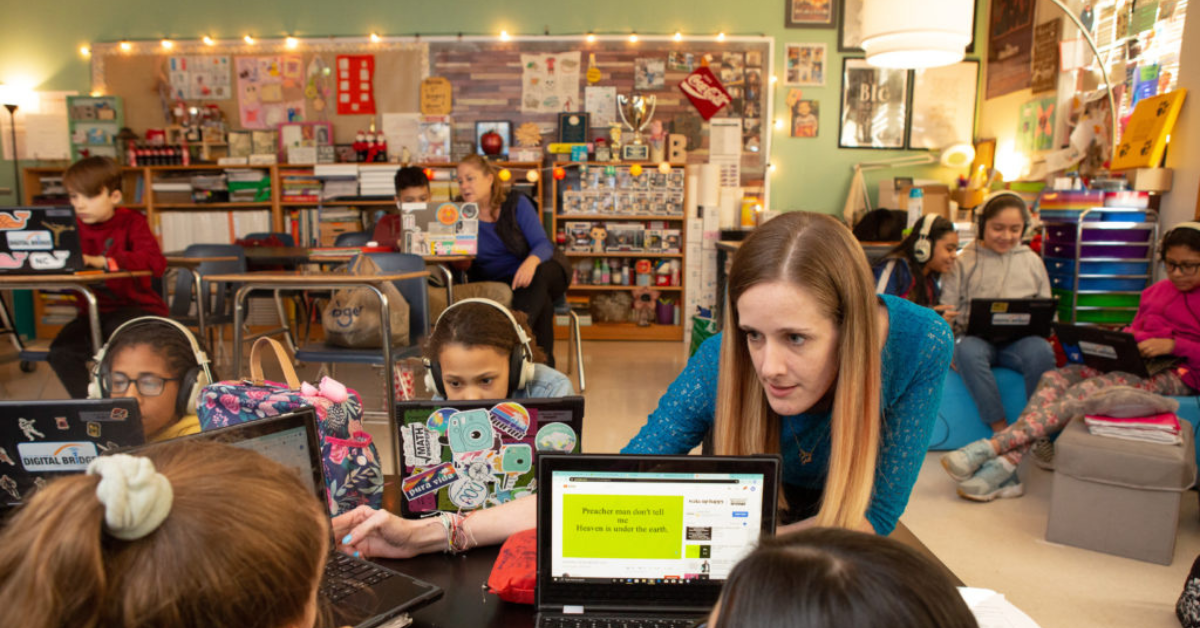
Mar 3, 2023 8:30:00 AM
After three disrupted school years, America’s K-12 learners collectively have significant unfinished learning and unmet mental health needs. While educators are working hard to help their students, our school systems simply aren't designed to address gaps this large.
The urgency to address the wildly disparate and varying needs of today’s students offers an opportunity to encourage approaches to teaching and learning that measure students’ progress while tailoring teaching and support to their individual needs.
State leadership is necessary to help teachers and school leaders make these shifts. Educators need flexibility to decide how students use their time and how learning is measured. And they need support transforming the way their schools operate.
This is why the Center on Reinventing Public Education, a research organization at the Mary Lou Fulton Teachers College at Arizona State University, and KnowledgeWorks, an education nonprofit, support schools, districts and states shifting toward student-centered practices.
These practices are sometimes referred to as mastery-based learning, competency-based learning, proficiency-based learning or personalized learning. At their core, they strive to help all students increase their ownership of the learning process, progress through content at their own pace and receive timely, actionable and individualized support to ensure they achieve mastery.
In contrast, traditional schools are designed around a large and rigid set of course or grade-specific expectations. Learners progress on fixed-time intervals. And their instruction is delivered by a single teacher, in a single classroom of 20 or more students.
Our research at CRPE suggests this design isn’t working well for many children. For almost three years, we’ve been closely studying school districts’ responses to the pandemic and the effectiveness of their recovery efforts.
In our recent study on efforts to tackle learning loss, district leaders told us it’s been virtually impossible to accelerate learning and provide individualized support to many students in one class, in part because they have academic gaps in different areas.
Attempting to catch students up as a large group cannot accommodate the varied emotional and academic consequences each of them have experienced – nuance we detailed in our national State of the American Student report last fall. In it, we offered a “roadmap to recovery” with ways education leaders could address those needs.
Taking such steps could potentially stave off some of the steep, future financial losses economists have predicted for individual students who were poorly served before the pandemic and who fell even farther behind during it.
How can states chart a path toward more individualized learning?
Every student, parent and educator should have a clear understanding of what students have learned, missed or haven’t yet mastered. Students should be offered a variety of ways to demonstrate what they know and can do. Schools should make it easier for teachers to give students individualized support by making staffing and schedules more flexible.
The good news: some state policymakers have encouraged student-centered approaches. We can learn from their work, which includes:
The pandemic and school closures amplified the challenges in our K-12 systems: growing gaps between the highest- and lowest-scoring students, a mounting mental health crisis and far too many students with disabilities and complex needs falling through the cracks.
They also underscored perils of an inflexible system designed for sameness. States must take note and continue building structures that allow educators to respond to each student’s individual needs, and ensure every student graduates with the intellectual and social foundation they need to thrive.
Photo: Allison Shelley of EDUImages
Jon Alfuth is a senior director of state policy at KnowledgeWorks. In this role he offers technical assistance to state partners with the development and adoption of state policy designed to advance personalized, competency-based learning. His areas of expertise include state policy transformation, workforce and postsecondary education policy and cross-sector education systems thinking. Travis Pillow is an innovation fellow and senior writer at the Center on Reinventing Public Education. He started his career as a journalist based in Florida’s capitol, covering politics, budgets, health care, and education policy for several online publications and Gannett newspapers. He later became editor of redefinED, a website chronicling the new definition of public education in Florida and elsewhere, and did other policy and communications work for Step Up For Students, the nonprofit that administers two of the nation’s largest private school choice programs.
The story you tell yourself about your own math ability tends to become true. This isn’t some Oprah aphorism about attracting what you want from the universe. Well, I guess it kind of is, but...
If you have a child with disabilities, you’re not alone: According to the latest data, over 7 million American schoolchildren — 14% of all students ages 3-21 — are classified as eligible for special...
The fight for educational equity has never been just about schools. The real North Star for this work is providing opportunities for each child to thrive into adulthood. This means that our advocacy...
Your donations support the voices who challenge decision makers to provide the learning opportunities all children need to thrive.
Ed Post is the flagship website platform of brightbeam, a 501(c3) network of education activists and influencers demanding a better education and a brighter future for every child.
© 2020–2024 brightbeam. All rights reserved.
Leave a Comment